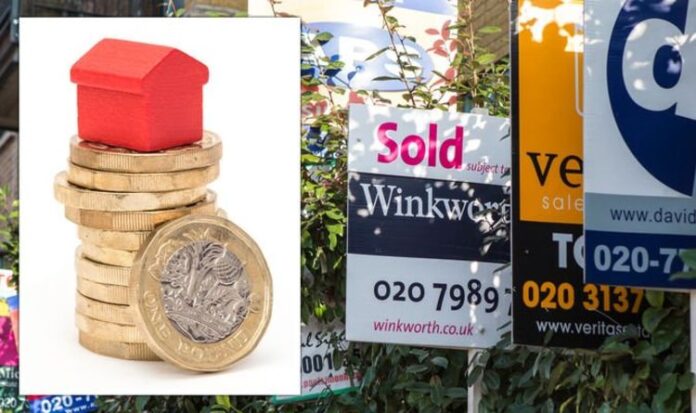After two years of temporary increases to the thresholds at which buyers have to pay stamp duty, thresholds are back to their usual levels. Here is how much stamp duty you will have to pay, depending on the cost of your property and whether it’s your main residence or not.
Stamp duty is a tax you pay when purchasing a property or land.
Known as a “progressive tax”, the amount of stamp duty you pay is determined by the cost of the property or land you’re purchasing.
Stamp duty is organised by thresholds, banding properties by their value.
Some people, such as first-time buyers, benefit from stamp duty relief up to a certain threshold.
READ MORE: Boiler trick that could save you ‘huge amounts’ on energy bills
What are the thresholds for stamp duty in 2022?
Stamp duty differs depending on whether you’re buying a main residence or an additional property, and where in the UK you are buying.
Below are the thresholds in each of the countries of the UK, but if you’d like to check a property’s specific value you can use the Government’s stamp duty calculator.
In England and Northern Ireland
For a main residence up to the value of £125,000 you will pay no stamp duty, for an additional property in the same threshold you will pay three percent.
For a main residence costing between £125,001 and £250,00, you will pay two percent stamp duty, on an additional property in the same threshold you will pay five percent.
If you buy a main residence costing between £250,001 and £925,000, stamp duty is set at five percent, and for an additional property in the same threshold it is eight percent.
For main residences costing from £925,001 and £1,500,000, stamp duty is 10 percent, whereas for an additional property in the same threshold it will be 13 percent.
A main residence costing over £1,500,001 will cost 12 percent in stamp duty, and an additional property in the same threshold will cost 15 percent.
For first-time buyers, they do not have to pay stamp duty on properties costing less than £300,000, and up to the value of £500,000, first time buyers do not pay stamp duty on the first £300,000 of their home’s value.
So if a first-time buyer is purchasing a house costing £450,000, they will only pay a stamp duty of two percent, as they are only paying stamp duty on £150,000.
In Scotland
Stamp duty is now known as ‘land and buildings transaction tax’ (LBTT).
For properties up to the value of £145,000, buyers will pay no LBTT if the property is their main residence, and four percent if it’s an additional property.
DON’T MISS:
Where to position your houseplants according to gardener Mark Lane [UPDATE]
Inheritance tax rules for gifting property to children [INSIGHT]
Retired homeowners left ‘trapped’ by stamp duty tax, claims expert [ANALYSIS]
For a main residence costing between £145,001 and £250,000, LBTT is set at two percent of the house price, and for additional properties six percent.
A main residence costing between £250,001 and £325,000 will cost five percent in LBTT, and for additional properties, LBTT will be nine percent.
For a main residence costing from £325,001 and £750,000, LBTT will be 10 percent but for additional properties of this value, LBTT will be 14 percent.
For main residences costing anything over £750,001, LBTT will be 12 percent of the property’s value, and for additional properties, LBTT will be 16 percent.
In Scotland, first-time buyers don’t have to pay stamp duty on properties up to the value of £175,000.
In Wales
The Welsh Revenue Authority collects land transaction tax (LTT) rather than stamp duty.
Unlike other nations in the UK, there’s no reduction in stamp duty for first-time buyers.
Main residences up to the value of £180,000 pay no LTT, whereas on additional properties LTT is set at four percent.
For main residences costing between £180,001 and £250,000, LTT is 3.5 percent and for additional properties is 7.5 percent.
For main residences costing between £250,001 and £400,00, LTT is five percent and on additional properties it is nine percent.
Main residences costing from £400,001 and £750,000 will cost 7.5 percent LTT, for additional properties in this threshold LTT is 11.5 percent.
If a property costs between £750,001 and £1.5million, the LTT on it as a main residence will be 10 percent, but if it’s an additional property it will be 14 percent.
Main residences costing more than £1,500,001 will have LTT of 12 percent, and for additional properties it will be 16 percent.
Credit: Source link









